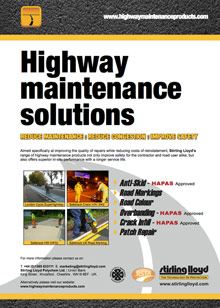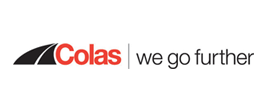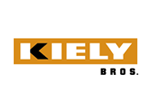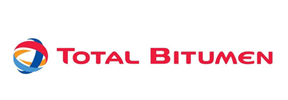eNews
Issue 10 - Autumn 2013
RSTA News
NEW CODE OF PRACTICE FOR INNOVATIVE PATCHING SYSTEMS
Best practice guidance on the installation of innovative patching systems for road maintenance has been published by the RSTA. Patching systems offer highway authorities a fast and cost-efficient alternative to conventional hot-mix asphalt.The new RSTA Code of Practice for Innovative Patching Systems covers systems such as spray injection patching and thermal road repairs. It identifies the key issues of these processes and provides practical guidance on how best to achieve high quality repairs. The Code has been peer reviewed and endorsed by ADEPT.
Spray injection patching uses high volume low pressure air to clean the road surface defect before applying a bond coat of either hot or cold bitumen emulsion. Aggregate is then propelled, using high volume air at low pressure, before mixing it with the bitumen emulsion before it is compacted as it is placed in the patch. The new repair can be trafficked immediately after laying. Thermal road repair involves applying heat to the upper 20-30mm of the road surface course of a defective area to soften the material so that it can be easily reworked with any extra materials added prior to compaction.
Both systems offer a number of benefits not least of which include cost reductions of up to 50%, installation that is up to 4 times faster, zero waste, a low carbon footprint of up to 85% lower and minimal disruption to road users.
The Code examines the processes in detail as well as forwarding the planning, co-ordination, health and safety, environmental and work execution responsibilities of client, contractor and installer. Full reference is made to the relevant regulations, standards and training qualifications. The new Code is the latest addition to the library of best practice guidance that has been developed and published by the RSTA to demonstrate how to get the best performance and durability from road surface treatments.
For free downloads of the RSTA Codes of Practice visit: www.rsta-uk/publications.htm
ROAD NETWORK ASSET MANAGEMENT GUIDANCE IS WELCOMED
The Road Surface Treatments Association has welcomed the launch by the Highways Maintenance Efficiency Programme (HMEP) of guidance on why asset management is the best way forward for highway maintenance funding.Published jointly with the UK Liaison Group (UKRLG) ‘Maintaining a vital asset’, makes the case to local councils for sustained investment in their road networks stating that they represent ‘your council’s most valuable asset’.
Asset management has long been forwarded by the RSTA as the best way to deliver a well-maintained road network. The starting point for asset management is to first ascertain the worth of that asset. Here, local councils will find that out of all their assets, their road network has the highest worth.
With asset management it is the service life, rather than the design life, of roads that is the key issue. The service life covers value-for-money, carbon footprint, performance and best maintenance solution. Integral to the calculation of service life is life cycle planning. This facilitates the development of the best overall strategy for asset management by enabling the calculation of the gross replacement cost, the annual depreciation and the annual running costs. This is essential for real budget planning as the provision of this basic information is useful in encouraging the examination of the best long-term maintenance approach.
Recognising that the implementation of best practice is integral to ensuring long-term service life, which in turn, is integral to asset management, the RSTA has developed a library of best practice guidance for a wide range of road maintenance solutions.
LOCAL AUTHORITY LEVY REFORMS COULD RESULT IN MORE POTHOLES
The Road Surface Treatments Association supports the warnings from the Local Government Association about the negative impact of proposals by the Department for Communities and Local Government to make local levying boards – including integrated transport authorities – subject to the same criteria as council tax referendums.Under the DCLG’s proposals, outlined in the Local Audit and Accountability Bill, levies set by bodies outside full council control – such as the Environment Agency, joint waste disposal authorities and local integrated transport authorities - would have to comply with rules that automatically call for a local referendum should they wish to increase local charges by more than 2%. Currently, these levies are included within resident’s council tax. The referendum trigger of 2% was set by the Secretary of State to curb potential council tax hikes. The Local Government Association (LGA) is concerned that if a levying body increases its charge by more than 2% then, in order to avoid having to hold a referendum, the local authority would have to absorb the additional costs by making further cuts elsewhere. LGA, which represents 421 local authorities, has described the levy reforms as ‘perverse’.
The proposed levy reforms could cause much uncertainty and have detrimental impact on local services including the funding of necessary road maintenance. The proposals are a return to the old local authority capping rules and we agree with LGA that this is a retrospective step.
For eight local authorities – Wandsworth, Bolton, Bury, Manchester, Oldham, Rochdale, Stockport and Tameside – which set council tax increases above 2% this financial year due to levies not being taken into account the reforms could prove expensive. LGA has calculated that these councils would lose £7.3 million in council tax. This is money that the authorities would need to cut back from other services. In terms of transport that could mean even more potholes.
COMMAND PAPER ON ROADS DOES NOT ADDRESS FUNDING SHORTFALL
The possibility of greater long-term certainty of road maintenance funding, as outlined in the government’s command paper on roads has been welcomed by the Road Surface Treatments Association . However, the new look public company Highways Agency proposed by the Government may be a further example of ‘all talk no action’ that acts as a distraction from the fundamental problem of a £8 billion shortfall in road maintenance funding.In its command paper, ‘Action for Roads – a network for the 21st century’, the government promises to resurface 80% of the strategic road network over the next seven years. Also proposed is setting up the Highways Agency as a publicly owned company to further remove it from the democratic process so freeing it from Whitehall red tape and removing the potential for future governments to cut the roads budget. Crucially, the government proposes that the new Highways Agency would be given a long-term, ring-fenced, funding settlement to progress the £28 billion spending plans for road construction and maintenance as outlined in June’s spending review.
The provision of long-term funding certainty for a more independent Highways Agency is to be welcomed as it would lessen the short-term thinking that is such an obstacle to the provision of a well-maintained road network. However, many of the projects included in the paper have either been announced previously or will not start until 2015-16 at the earliest. It is important that the attractive headlines of the command paper do not detract from the fundamental issue of chronic historic under spending and lack of investment in our road network. Unfortunately this issue has not been addressed.
back to contents »
Copyright 2013 Road Surface Treatments Association. www.rsta-uk.org









